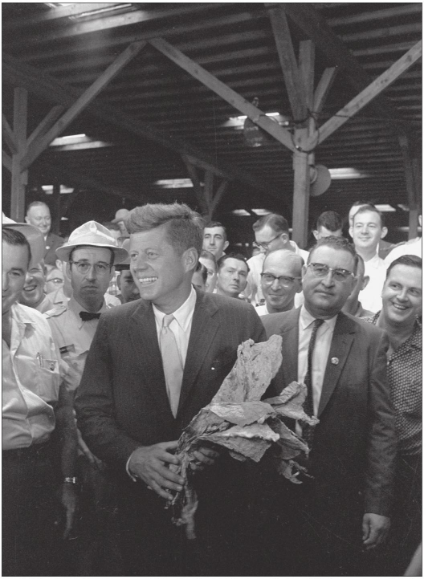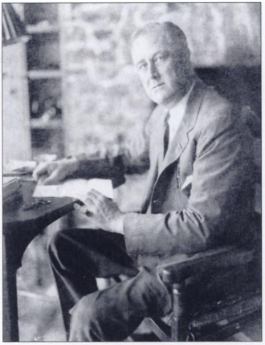While only four sitting American presidents have been assassinated while in office, there have been at least 17 attempts to murder a president in the country’s history. Each of the successful assassinations came during or after moments of tremendous change in America, while many of the attempts were attributed to mental illness. These are five presidents who succumbed to or survived assassinations.
John F. Kennedy

Most of us are familiar with the story of President John F. Kennedy’s assassination. During a motorcade through Dealey Plaza in downtown Dallas, Texas in 1963, a gunman shot and killed the president. At midday, the open top car carrying the Kennedys turned into the plaza where the streets were lined with people. The parade was interrupted when gunfire erupted into the scene. JFK was shot in the neck and head and the city’s governor was shot in the back. The car sped to Parkland Memorial Hospital, where the president was pronounced dead thirty minutes after the first bullet flew.
Lee Harvey Oswald was arrested less than an hour later, but during a transfer to the county jail two days after the attack, he was shot at point blank by Jack Ruby, a local nightclub owner. On November 25, 1963, JFK was buried in Arlington National Cemetery, where Jackie Onassis joined him after she passed. Today, the graves are home to the eternal flame, and see millions of visitors every year.
Ronald Reagan
President Ronald Reagan had been in office less than 100 days when an attempt was made on his life. On March 30, 1981, John Hinckley Jr. shot the president outside the Hilton Hotel in Washington. The president was injured by a single bullet as he was entering his car at 2:27 pm. Upon review, it was ruled that the Secret Service had securely protected the president during his speech at the hotel, but failed to keep the crowd far enough away when Reagan exited through “President’s Walk.”
There were six shots fired in total, but five of them missed the president. One hit police officer Thomas Delahanty in the neck and another struck Timothy McCarthy in the abdomen as they shielded the president from the attack, but no one was killed. The other three bullets hit either surrounding buildings or the car. The shooter was found not guilty by reason of insanity, as he claimed he wanted to kill the president to impress actress Jodi Foster after seeing her performance in Taxi Driver. Ironically, the assassination attempt boosted Reagan’s general approval ratings, and some claim this helped him win the 1984 election.
Franklin D. Roosevelt

On a warm afternoon in Miami in 1933, a mentally ill and unemployed bricklayer named Giuseppe Zangara shouted, “too many people are starving!” before firing at President Franklin D. Roosevelt. Roosevelt had been delivering a speech at Miami’s Bayfront Park, and had just left in an open top car when Zangara fired six rounds, hitting five people – none of whom were the president. The one person killed was the mayor of Chicago, Anton Cermak.
People in the crowd attacked Zangara until Roosevelt told them to stand down and let the authorities handle it. The FBI interviewed Zangara, who revealed that he didn’t hate FDR personally, he simply hated anyone who was rich. He also noted his chronic stomach pains, “since my stomach hurt, I want to make even with the capitalists by killing the president.” Because of the death of Cermak, Zangara was found guilty at trial and killed by the electric chair.
Abraham Lincoln
The assassination of President Abraham Lincoln is one of the most infamous in American history. America had just found relief with the end of the Civil War when the president was shot point blank while attending a performance of “Our American Cousin” at Ford’s Theater in Washington D.C.. The assassin, John Wilkes Booth, was a well-known actor of the day. He leapt onto the stage from the president’s box where the crowd cheered, thinking the attack part of the performance, but the screams of Mary Lincoln told them it was not.
Soldiers carried Lincoln to a boarding house across the street where a doctor who had also been attending that night’s performance tried to save the president’s life. Alas, the surgeon general arrived, and pronounced Lincoln dead at 7:22 a.m. on April 15, 1865. The country was devastated by the loss of their president. The subsequent search for Booth was one of the largest manhunts in history, involving 10,000 federal troops, detectives, and police. It lasted until April 26, where a fatally wounded Booth was hiding in a barn. Union troops set fire to the barn, but Booth remained inside. When a sergeant caught sight of Booth, he fired, killing the assassin.
William Howard Taft

The 1909 meeting between William Howard Taft and Mexican president Porfirio Diaz was slated to be historic. It would be the first meeting between leaders of the two countries, and the first time an American president would step over the U.S.-Mexico border. They agreed that the Chamizal strip between El Paso, Texas and Ciudad Juarez would be neutral territory, with no flags of either country present during the meeting. However, news of the meeting led to an influx of assassination threats against both presidents. Texas Rangers, U.S. and Mexican troops, Secret Service agents, FBI agents, and U.S. Marshals were all enlisted to provide security.
On October 16, the day of the summit, a Texas Ranger was alerted by a man who appeared to be carrying a pistol. The man was standing in the crowd at the El Paso Chamber of Commerce along the route both presidents would take. The ranger disarmed and restrained the man as Taft and Diaz passed just feet away.
Some of the most tragic losses in American history have come from the deaths of acting presidents. These are just five presidents who have either been victims of successful assassinations or managed to escape with little to no harm. The stories of these attempts, successful or not, have forever marked the history of the nation.

